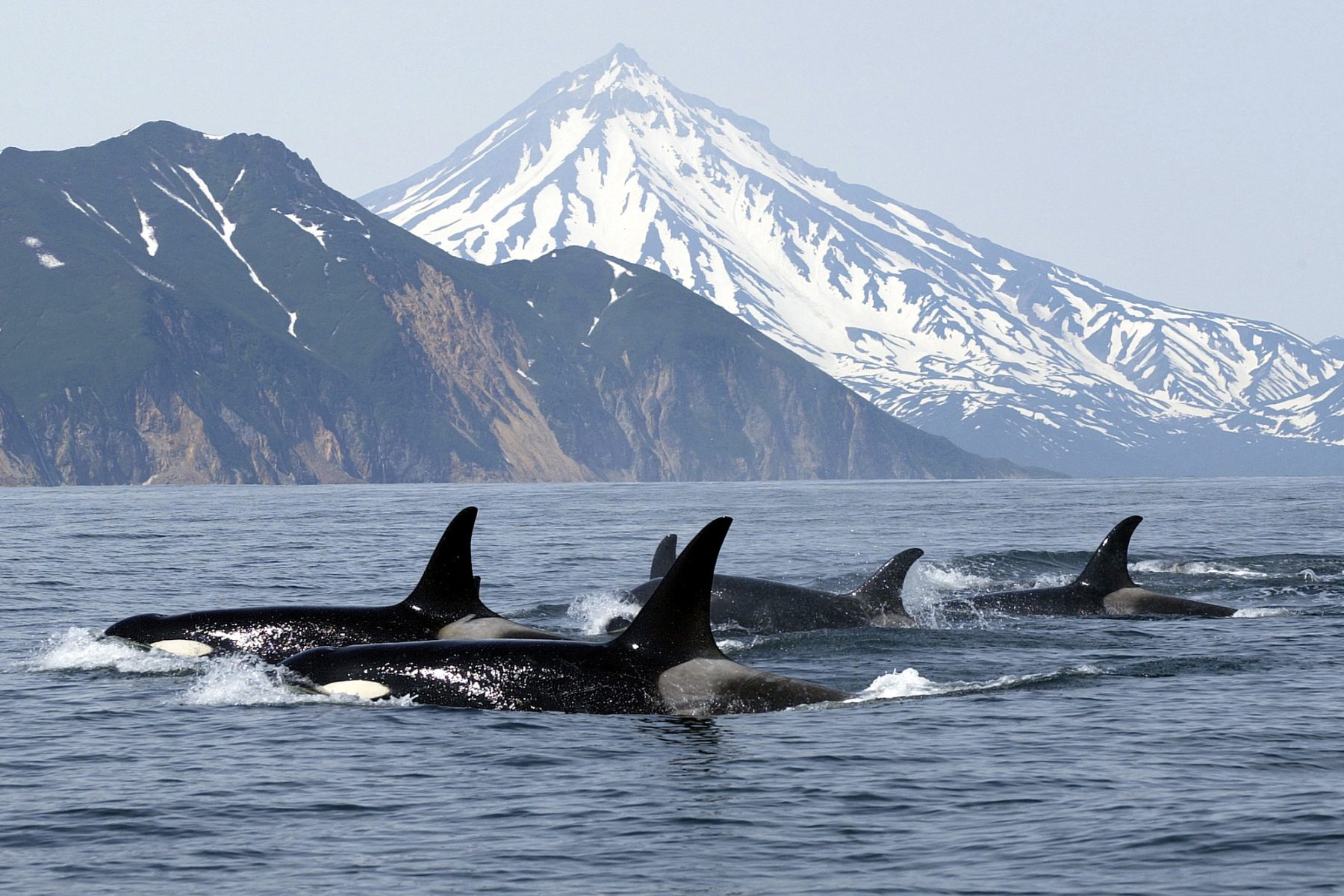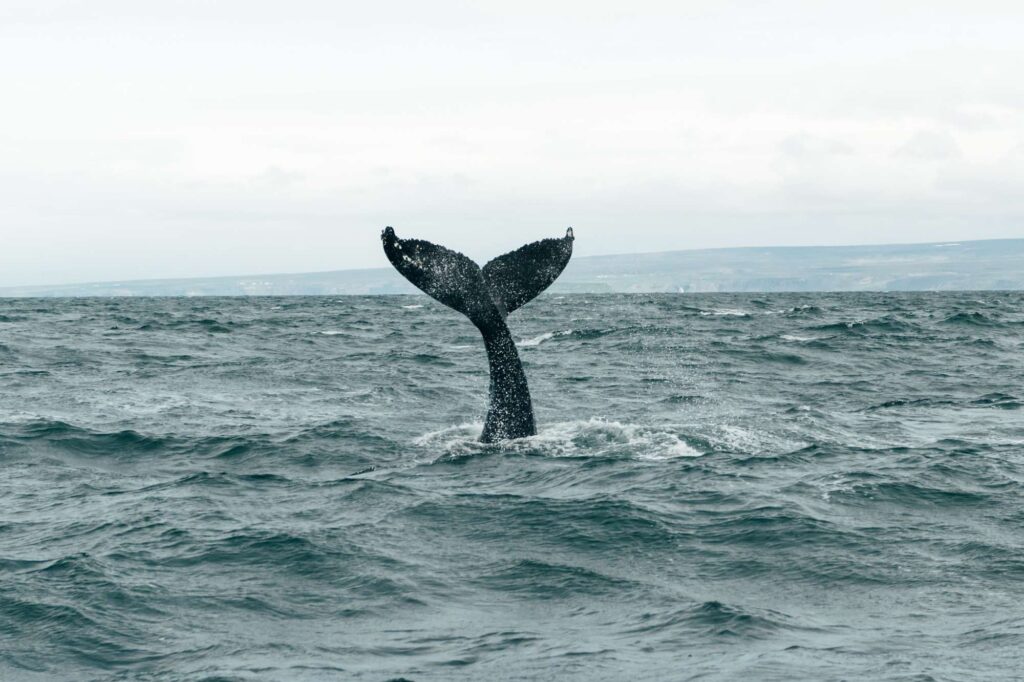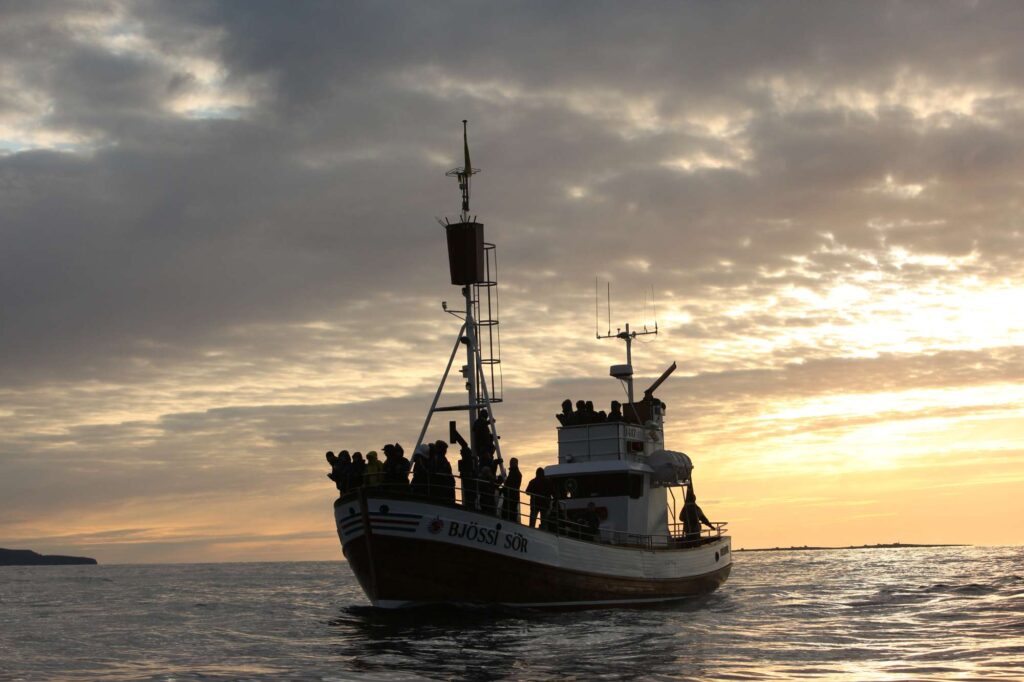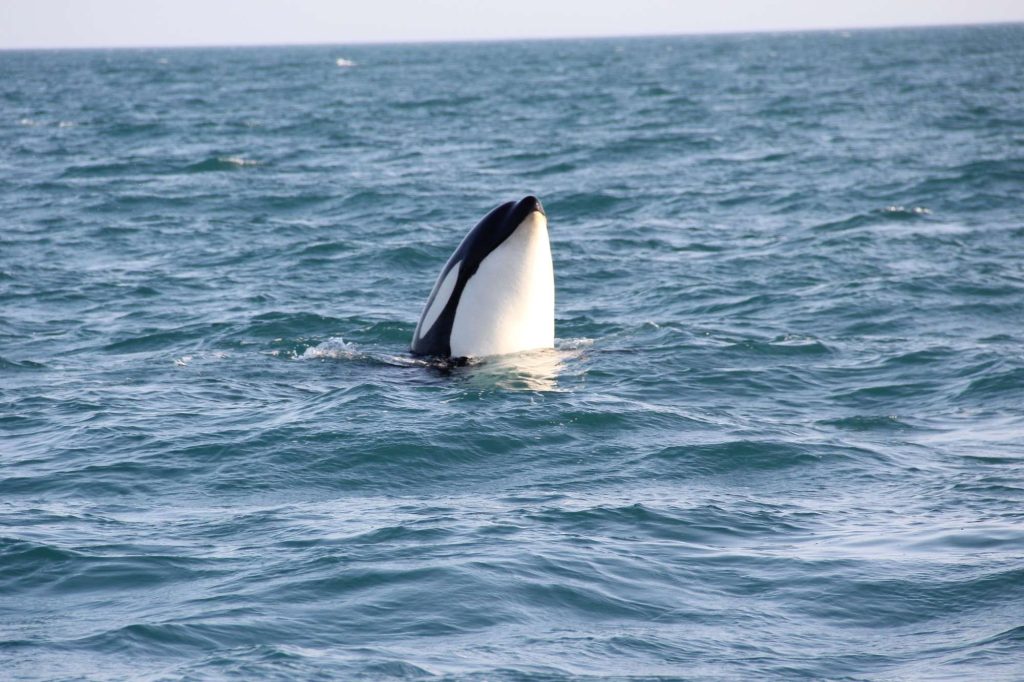
Your Guide to Summer Whale Watching in Iceland
Spotting a whale in the wild is a thrilling experience, and in Iceland where the surrounding waters are rich with krill and fish, there are plenty of chances to encounter these incredible marine mammals. If you are visiting Iceland to enjoy a wildlife experience, this guide will answer some of the most prominent questions travellers have.
What kind of whales can you see in Iceland?
There are around twenty-three species of whale that make their home in the waters around Iceland’s shores. The most commonly seen are minke whales, orca, humpback whales, blue whales, harbour porpoises, and white-beaked dolphins.
The mix of warm and cold ocean currents, and an abundance of summer daylight, make Iceland’s waters busy with fish and krill, creating plentiful feeding grounds for many types of whale. The most commonly seen is the minke whale which, although smaller than some other species, can reach up to nine feet in length and makes for an incredible sight.
What are the chances of seeing whales in Iceland?
Due to Iceland’s rich waters, whales are abundant and you have an excellent chance of spotting them on your trip. Iceland’s unique ocean environment means you have a 90-95% chance of spotting at least one species during your time there from specific locations. However, it’s best to bear in mind that these are wild animals and their movements cannot be fully predicted so, although it is likely, it’s not guaranteed.

What is the best time of year to go whale watching in Iceland?
The best time to visit Iceland for whale watching is from April to October, with the summer months being the peak season. June, July and August are the best months for whale watchers because the seas are at their most lively at this time of year.
However, whale watching in Iceland is a year round affair and late winter into early spring is the best time to spot orcas off the coast of the Snæfellsnes Peninsula.
What time of day is best to see whales in Iceland?
You can see whales at any time of day, but if you are looking to capture some pictures of these incredible creatures, you should aim to get out onto the water from 11am – 3pm. During this time the overhead light is at its brightest, highlighting the blue of the water and giving a picturesque atmosphere for photos.
The height of summer also offers opportunities for evening whale watching trips.
Where is the best place to whale watch in Iceland?
Luckily, because of the sea’s rich bounty of food, you can spot whales from many different places across Iceland. The town of Húsavík is a great place to start as it is known as Europe’s whale watching capital. From the town’s bay, called Skjálfandi Bay, you can spot humpbacks, minke whales, and white-beaked dolphins, among others. You can also enjoy whale watching excursions from other ports, including Akureyri, Hauganes, Ólafsvík, and Reykjavik.

Can you see whales from the shore in Reykjavik?
Although Reykjavik has a large bay, it is unlikely you will spot whales from the shore. Recently, there have been binoculars installed at Eiðisgrandi Beach (towards the west side of the city), but your chances are still better if you get out onto the water.
If you really want to stay on dry land, there are chances to see whales from the coastal towns in the Snæfellsnes Peninsula and you may be able to see orca from Grundarfjörður’s harbour.
When can you see orcas in Iceland?
Although unpredictable animals, it is most likely you will spot them during the late winter/early spring months as they follow the herring migration. The best place to see them is the Snæfellsnes Peninsula – you can also see dolphins and porpoises there as well. This time of year means you can combine daytime whale watching with viewing the northern lights in the evening… hopefully.
Is whale watching safe in Iceland?
Yes. Due to the fact that whale watching in Iceland is a big business, it is very safe for both humans and whales. Excursions place the animals’ welfare at a premium. And because you are seeing them in their own environment and they are naturally inquisitive, they tend to be more active and playful.

How much is whale watching?
This depends on the length of your trip and the number of excursions you take and start from around £60 for a 3-hour excursion. You could choose to make whale watching a feature of an independent self-drive such as our Northern Highlights itinerary, which starts from £1,162 based on 7-nights accommodation and car hire. Whale watching excursions can be added in from Akureyri and Husavik.
You can discover more about whale watching holidays in Iceland, or call us today on 01737 214 250 to discuss your holiday plans.
Watch the video for further inspiration.



 Instagram
Instagram
 Facebook
Facebook
 YouTube
YouTube